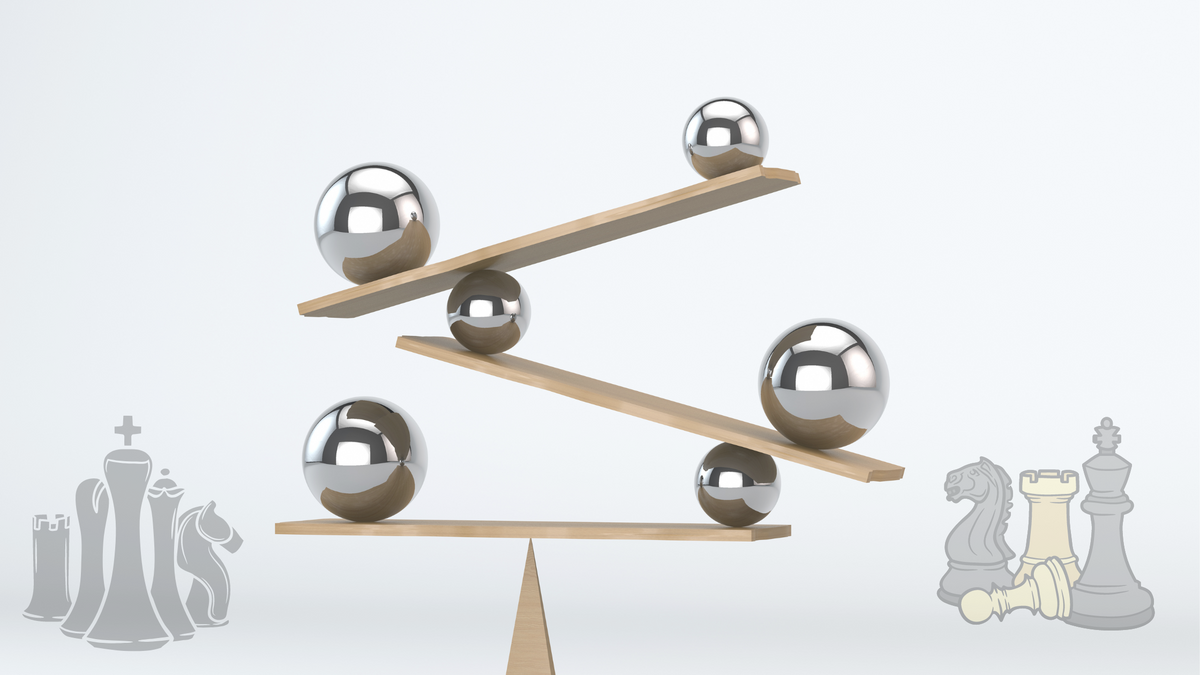Unraveling the Intricacies of Material Imbalance and Its Significance in Modern Chess Tournaments

Material imbalance in chess refers to the situation where one player has a different quantity or quality of pieces compared to their opponent. It occurs when the two sides have an unequal distribution of material on the chessboard. In chess, each piece has a specific value assigned to it, and the total material value for each player can help assess their relative strength in the game.
The standard material values assigned to the pieces are as follows:
- Pawn: 1 point
- Knight: 3 points
- Bishop: 3 points
- Rook: 5 points
- Queen: 9 points
When there is a material imbalance, it means that one player has more or fewer points worth of pieces than their opponent. For example, if one side has two rooks (10 points) while the other has a queen (9 points), there is a material imbalance in favor of the player with the queen.
Material imbalances can significantly affect the dynamics and strategies employed by both players. The side with more material usually has the advantage since they have more firepower and greater control over the board. They can potentially coordinate their pieces to launch attacks and put pressure on their opponent.
On the other hand, the player with less material may compensate for the deficit by employing different strategies. They may aim for tactical complications, seeking to create threats and generate counterplay. Sacrificing material to gain positional advantages or create tactical complications is a common approach to balance the game.
In some cases, material imbalances can be temporary. Sacrificing material to create a strong initiative or launch a powerful attack is a common tactic in chess. Such sacrifices are made with the hope of gaining a strategic or tactical advantage that will compensate for the lost material in the long run.
Understanding and managing material imbalances is a crucial skill in chess. It requires players to assess the value of each piece, evaluate the resulting positions accurately, and make informed decisions regarding piece exchanges, sacrifices, or defensive maneuvers. A player's ability to handle material imbalances effectively often determines the outcome of the game.
Material imbalance remains highly significant in modern chess tournaments. While the game has evolved over time with the advent of advanced opening theory, deeper strategic understanding, and improved computational analysis, the value of the material on the chessboard remains a fundamental factor in evaluating positions and making decisions.
In top-level chess tournaments, players strive to gain and maintain a material advantage whenever possible. The extra material provides tangible benefits such as greater attacking potential, increased control over the board, and more opportunities for creating threats and exploiting weaknesses. Skilled players often capitalize on material imbalances to build powerful attacks, force concessions from their opponents, or convert the advantage into a winning endgame.
However, modern chess has also demonstrated that material is not the sole determinant of a winning position. Positional factors, strategic plans, piece activity, pawn structure, and king safety are equally important considerations. Grandmasters and elite players can evaluate the overall position and make sacrifices or exchanges to obtain intangible compensation, such as better piece coordination, initiative, or positional advantages.
Material imbalances frequently serve as a catalyst for dynamic and exciting play in modern tournaments. Sacrifices of material, particularly in the opening or middlegame, are often employed as a means to disrupt opponents' plans, create tactical complications, or generate attacking opportunities. Such sacrifices can catch opponents off guard and introduce complications that demand accurate calculation and precise evaluation.
Moreover, modern computer analysis and preparation have enhanced players' understanding of specific material imbalances and their potential consequences. Players can study games and positions where material imbalances occurred and use that knowledge to better assess the value and impact of different imbalances. This allows them to make informed decisions about whether to accept or decline sacrifices, exchange pieces, or play for long-term compensation.
In summary, material imbalance remains a crucial aspect of modern chess tournaments. While its significance is complemented by other strategic and positional factors, players continuously aim to achieve favorable material imbalances to gain an upper hand and increase their chances of victory. The ability to navigate and exploit material imbalances effectively remains a key skill for competitive chess players.
Let's explore a couple of case studies that highlight the significance of material imbalance in modern chess tournaments.
Case Study: Kasparov vs. Topalov (Wijk aan Zee, 1999) In this classic encounter between two chess titans, Garry Kasparov, playing with the black pieces, sacrificed material to gain a decisive advantage. Facing Veselin Topalov, Kasparov played a stunning exchange sacrifice by offering his rook for a knight and a pawn, resulting in a material imbalance favoring Topalov. However, Kasparov obtained excellent piece coordination, superior pawn structure, and control over key squares in the center. The intangible compensation outweighed the material deficit, and Kasparov's strategic pressure eventually led to victory.
This case demonstrates the art of sacrificing material for positional and strategic compensation. Kasparov's bold sacrifice disrupted Topalov's plans, creating imbalances in piece activity, and forced the opponent into defensive mode, ultimately securing a favorable outcome.
Similar case studies exemplify the significance of material imbalance in modern chess tournaments. They demonstrate how sacrifices and material imbalances can lead to dynamic and strategically rich positions.
By understanding the potential compensation and evaluating the overall position accurately, players can make informed decisions to exploit material imbalances for their advantage, showcasing the artistry and complexity of chess at its highest level.
One of the foremost experts on material imbalances is Grandmaster Boris Avrukh and you can learn from him on chessable, modern-chess and nurtr